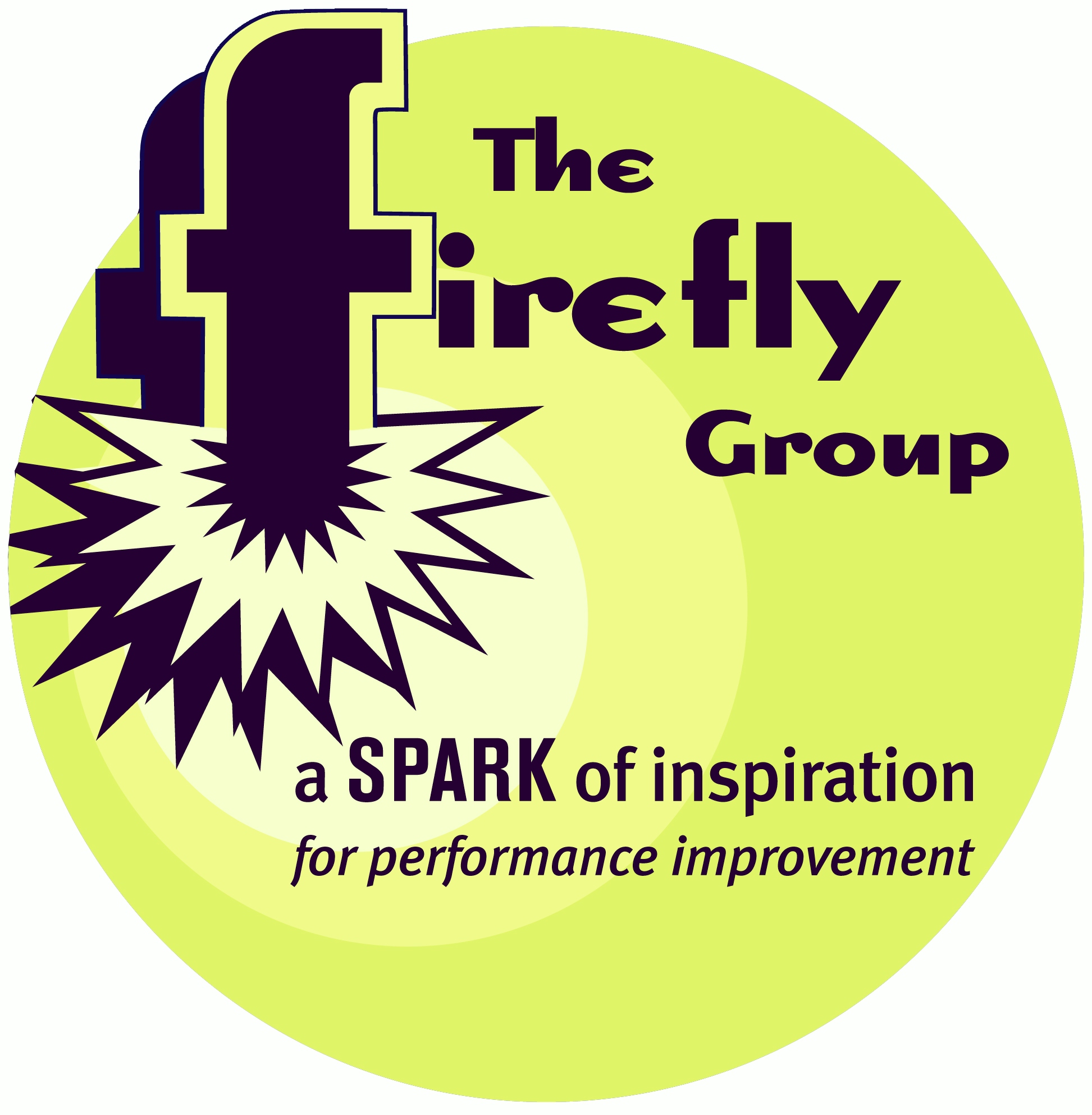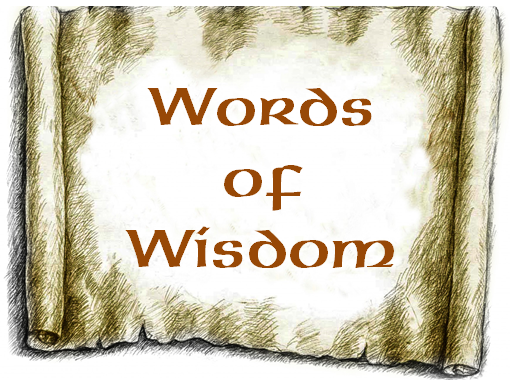

What's New

Words of Wisdom
52
cards and 15 activities to spark conversations and make sense of learning.
Learn more HERE.
What We Do
The Firefly Group helps people make sense of what they learn and experience.
Whether facilitating a group for better decision-making, keynoting a conference, leading a training, or writing an instructional design, we use novel methods that engage, spark creativity, and produce memorable results.
 If
this sounds like a good direction for your organization, let's talk about
how we might collaborate! Please give me a call (802.257.7247) or send an
. - Brian
If
this sounds like a good direction for your organization, let's talk about
how we might collaborate! Please give me a call (802.257.7247) or send an
. - Brian
 Your ETR (Estimated Time to Read): 10 minutes Your ETII (Estimated Time to Implement Ideas): 5 weeks |
What
can you teach with a eight washers tethered to a string?
Watch my video and find out!
March
2018
Scarce Resources - Hoarding that's Habit Forming
|
Say
It Quick |
Discoveries bits of serendipity to inspire and motivate |
Ideas fuel for your own continuous learning |
Activities tips and tricks you can try today |
|
Scarce Resources - Hoarding that's Habit Forming |
Super-Size Me - What Do We Really Need? |
Environmental Behavior - Less Control than Your Think |
M&M & M's - An Experiment for Your Team |
Scarce Resources
 A lack of collaboration, the unwillingness to share information, unnecessary
competition for recognition and resources, these are just a few of the difficulties
that can surface in an organization. Why do we encounter these barriers in
the workplace? Sometimes they appear to be baked into the environment. And
perhaps they are! In this issue of the Firefly News Flash, discover how the
environment we create for ourselves might actually encourage us to hoard resources.
.
A lack of collaboration, the unwillingness to share information, unnecessary
competition for recognition and resources, these are just a few of the difficulties
that can surface in an organization. Why do we encounter these barriers in
the workplace? Sometimes they appear to be baked into the environment. And
perhaps they are! In this issue of the Firefly News Flash, discover how the
environment we create for ourselves might actually encourage us to hoard resources.
.
Scarce Resources
At the annual St. Patrick's Day breakfast of the Holyoke Chamber of Commerce, the tables were decorated in green and silver. Each place had a candle gift wrapped for the guest. After the mayor's speech and announcement of the parade queen, it came time to leave. On the way out, I snatched an extra gift candle "for a friend."Wait. Why was I doing this? I don't need candles. I'm not even Irish!
Why, in a land of plenty, do we feel such scarcity? Even if something is free, should we have it - or hoard it?
Super Size
Me
What Do We Really Need?
Researchers wanted to know to what degree portion size influences how much people eat. So they went to the movies - not to watch the show but to give away buckets of popcorn.
Moviegoers were given free popcorn. Some received a jumbo bucket while others got a super-size jumbo bucket. For everyone, the amount they received was far more than anyone could reasonably eat no matter how hungry they might be. Regardless of portion size, people randomly received fresh popcorn or fourteen-day-old popcorn that was stale, hard, and squeaky when chewed.
To gauge whether portion size influenced consumption, the researchers weighed all the popcorn buckets before and after the show. They found that snackers who had fresh popcorn ate 45.3% more when they had been given a super-size jumbo bucket. Surprisingly, there were similar results for people who had been given stale popcorn. They ate 33.6% more when they had been given the largest container even though the popcorn tasted bad and stuck to their teeth. Portion size had a definite influence on consumption.
Researchers speculate that perhaps people would eat more healthy food if it was served in a larger portion size.
For More Information:
"Bad popcorn in big buckets: portion size can influence intake as much as taste." Wansink B., Kim J., Journal of Nutrition, Education, and Behavior, 2005 Sep-Oct; 37(5):242-5. https://www.ncbi.nlm.nih.gov/pubmed/16053812
Environmental
Behavior
Less Control than You Think
Imagine eating a third more popcorn that you don't like just because the container is bigger. Or taking extra gift candles just because they are there.
The environment seems to have an outsized influence on our behavior.
But perhaps having the right environmental conditions simply means it's easier to make the choices that we later regret. I can imagine several ways we might explain or justify hoarding unwanted candles or munching on stale popcorn.
Perhaps you can think of additional reasons someone might binge on stale popcorn. But whether popcorn, candles, or something else, we have a metaphor to help us talk about workplace interactions and team dynamics. Think about how distraction, unnecessary penny pinching, fear of not having enough, a reliance on luck, years of conditioning, guilty feelings, arrogance, selfishness, and privilege keep us in a rut. They taint our relationships with the people who can help us, they hobble our creativity, and they prevent us from living as our best selves.
The action-related question that arises from all this is what sort of environment does our organization or team have? Does the culture promote sharing, growth, and collaboration? Or do we favor hoarding, secrecy, and unnecessary competition?
We don't always make a distinction between what we want and what we really need. Instead, we tend to let the surrounding situation decide for us. That's all the more reason to be intentional about creating positive environmental cues. After all, if you can hoard it, you can also share it.
M&M & M's
An Experiment for Your Team
You can lead a fruitful discussion with your team by sharing the popcorn research study with your team. However, you can infuse that discussion with more meaning by involving your team in a research experiment of your own.
M&M & M's
Goal: to identify the negative dynamics associated with self-serving or self-promoting behaviorsMaterials: Several large bags of M&M candies (or similar); Large serving bowl; Paper cups in two sized, one cup for each person
Time: 30 - 45 minutes
Participants: Five to fifteen people seated in a circle
Procedure: Before the activity, empty the candies into the serving bowl. When people arrive, randomly give a cup to each person making sure some have small cups and others have large cups.
Walk around the circle making small talk as you invite people to scoop out candies from the serving bowl with their paper cup. Encourage everyone to take some candies even if they do not plan to eat them.
When everyone has been seated and has a cup of candies, ask them to count the candies in their cup plus any they may have already eaten.
Announce that this is not just a time for snacking but a time for sharing and getting to know one another better. Explain that for each piece of candy they have taken, people must share a piece of personal information or an unknown fact about themselves.
Pause for a moment to let that information sit with people, then look into your own cup - which you have been very careful to only fill with two or three pieces of candy. Announce that you will go first so you can model the type of information people should share. Proceed to give two or three personal facts about yourself.
Ask for a volunteer who would be willing to go next. Again, pause for effect. Whether anyone volunteers or not, end the activity by revealing that you do not expect anyone to share personal information and that this is really an opportunity to talk about how the group shares resources among themselves.
Acknowledge that some people received small cups and some received large cups. Ask people to describe how they felt when they received their cup.
Make a chart showing the size cup people had and the number of candies they took. What is the relationship between cup size and size of portion taken? It's true that people with a small cup would soon reach a limit of how much they could take. But did people with large cups tend to take more just because they had more cup to fill?
Point out that people who took more may have done so because they had a larger cup. This tendency is not uncommon and need not be a source of shame.
Share the study about popcorn consumption from the Discoveries section above. Lead a discussion about hoarding or sharing of resources and information in your organization using some of the following questions.
Discussion:
- What are the specific tangible and intangible things we might hoard in our team or our organization?
- What are the elements of organizational culture that might lead someone to be protective of their "stuff"?
- What is the difference between hoarding objects, protecting resources, and saving for the future? " How do you decide when you have enough?
- How do you decide when to share with other individuals or departments?
- What can we do to promote collaboration, sharing, and growth in our organization?
Please give this activity a trial with your group then your experience.
|
Whether you need a keynote speaker, or help with strategic planning, performance improvement, or training facilitators and trainers in your organization, I look forward to your call (802.380.4360) or . -- Brian |
Read previous
issues. Click Library!
To add or delete your name to our mailing list, email
with a short note in the subject line.
I want this newsletter to be practical, succinct, and thoughtful. If you have suggestions about how I can meet these criteria, please let me know! Send me an with your thoughts and ideas.
Home
| Services | Products
| Mission | Ideas
| The Group | The
Buzz
(c)
2017 The Firefly Group